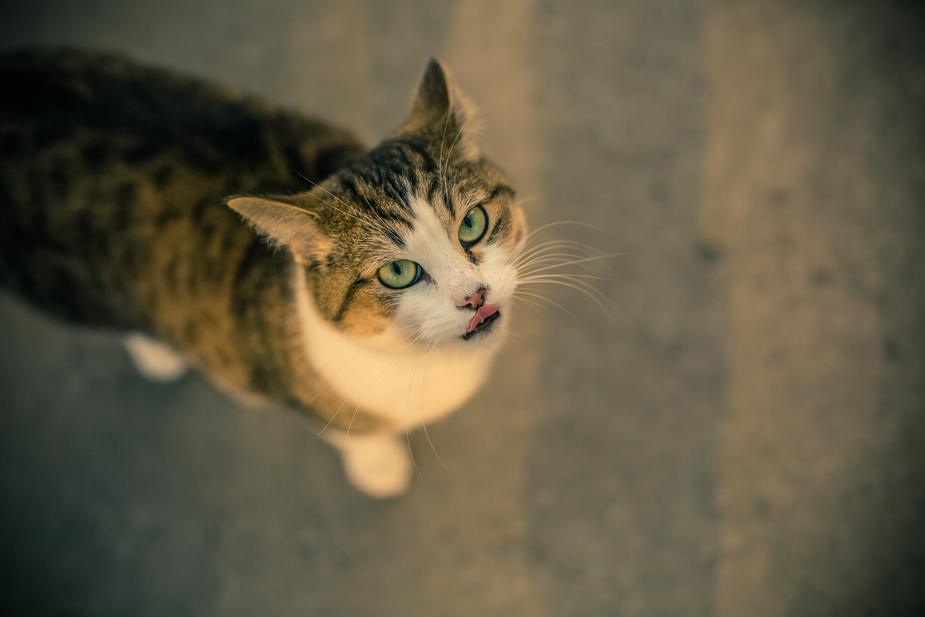Ever wonder what your cat is trying to say to you? While we may not speak the same language as our cats, that doesn’t mean they can’t communicate effectively with us. In honor of September being National Happy, Healthy Cat Month, we thought it would be a good time to answer this common question: how do cats communicate with us?
While often appearing independent and aloof, cats are constantly communicating their moods, likes, and dislikes with us. Understanding these cues can go a long way in ensuring a happy, healthy feline. With careful observation and a little help from us at Anasazi Animal Clinic, you’ll be well on your way to understanding “cat talk!”
Your Cat’s Tail is Talking to You
You can learn a lot about a cat by simply watching how she is holding her tail at any given moment. Here are some of the more common tail positions and what they mean:
- Pointed straight up—A tail held high indicates friendliness, happiness, and that she’s feeling approachable.
- Curved—When a cat is relaxed, her tail may be curved into a U shape. The more confident a cat feels, the higher her tail will move. This happy tail is also signaling playfulness.
- Touching or wrapped around another cat or person—This tail is communicating that she wants to be your friend.
- Slowly swishing—This usually means Fluffy has spotted something enticing and is zeroing in on it. Cats will often thump their tails against the ground right before they pounce.
- Low—Cats hold their tails close to their bodies when they are feeling unsure or afraid.
- Between the legs—This is saying she is feeling extreme fear or uncertainty (often along with a lot of hissing, growling, and flattened ears). It’s a warning that, if provoked, she feels uncomfortable enough to attack.
- Puffed—When tail fur becomes bristled or puffed out, it indicates alarm or aggression, regardless of the position of the tail. She is trying to appear larger to whatever the perceived threat is.
- Wagging—Unlike dogs, who wag their tails out of friendliness, a wagging cat’s tail is a warning sign. Cats often thrash their tails back and forth when they are scared or angry and may react aggressively.
What about Meowing?
Did you know that cats do not “meow” at each other? This way of communicating is reserved only for their human companions. As cat parents, it’s important that we understand what our cat is trying to tell us, especially when it comes to pain because cats can be very subtle when they are feeling physical discomfort. So how can we understand what our cat’s meowing is saying to us?
If you live with a vocal cat, you will notice how they have different sounds to their meows and many variations in tone and quality. When your cat wants food or attention then the meows will sound pleasing. But if your cat is angry or annoyed, then her meow will sound very unpleasant—it is meant to get your attention.
If your cat is in pain, she will likely let out a high-pitched meow (check out this blog post for some other signs that your cat may be in pain). Low-pitched meows are often mean she is trying to express that you have done something wrong in her eyes. Multiple meows in a row are often used as an excited greeting, especially if you have been gone for a long time.
Other Ways Cats Communicate
Of course, cats have other ways of communicating with us too—purring and chirping are other signs she is happy and content. Look for long, slow blinks when you’re with your cat. If you notice your cat doing this, it means she is totally comfortable around you! In the feline world, closed eyes are a sign of trust and acceptance. Try blinking slowly back at your cat to let her know you feel the same way!
Give us a Call!
How do cats communicate with you? We’d love to hear your stories! If you have additional questions or concerns about your cat’s behavior, don’t hesitate to contact our staff at Anasazi Animal Clinic in Gilbert to schedule an appointment for your fur baby. We simply love talking “cat!”

